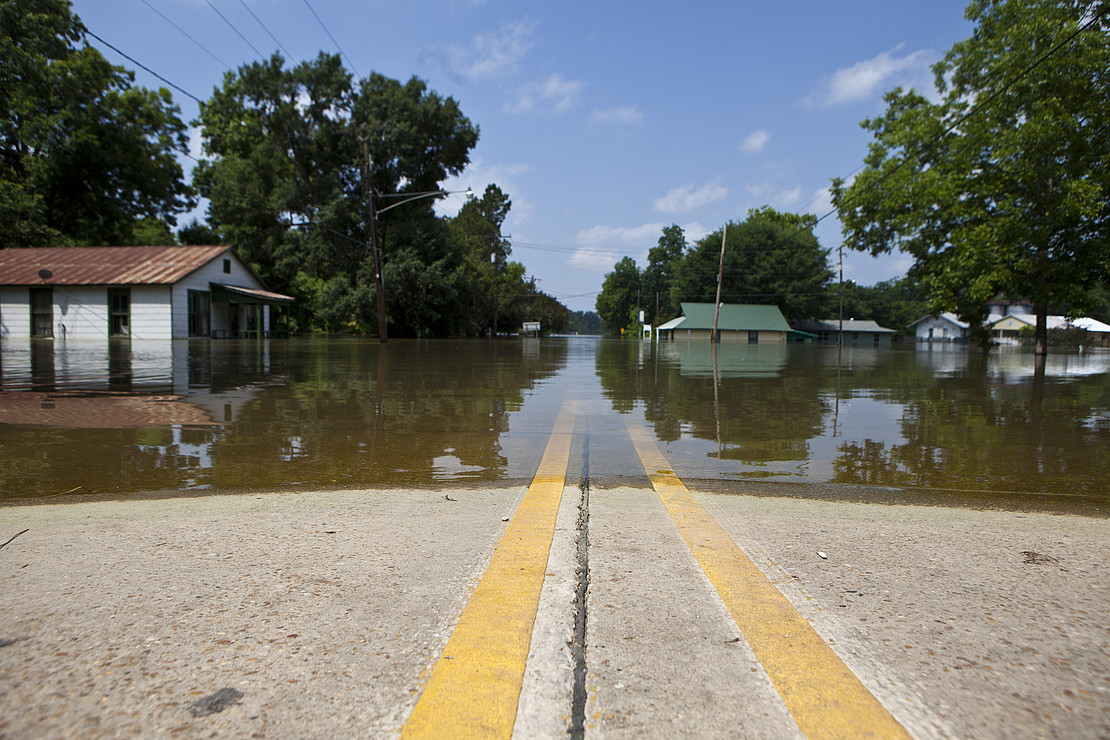Study Shows Rising Global Risk of River Flooding
 Image: David Y. Lee, The Nature Conservancy.
Image: David Y. Lee, The Nature Conservancy.As a result of climate change, more extreme rainfall events are occurring around the world, with flooding along rivers inundating entire swaths of land. Now a study presented what a great threat the floods pose to the people living there. It was commissioned by the non-profit nature conservation organization The Nature Conservancy (TNC, Arlington, USA) and the German NGO alliance "Entwicklung Hilft". The final report was produced in collaboration with Toronto (Canada)-based McGill University, Ruhr University Bochum, and the Center for Environmental Systems Research (CESR) at the Kassel University (Dipl.-Geoökologe Florian Wimmer and Dr.-Ing Martina Flörke, now a professor at Ruhr University Bochum).
CESR was instrumental in this by providing the data basis in 2017 and 2018. The study combines Geographic Information Systems (GIS)-based spatial mapping with flood modeling and climate scenarios to assess both current and expected river floods around the globe, while highlighting the untapped potential of nature-based solutions to minimize these growing risks.
After all, in the 21st century, floods represent the most common natural hazard to human lives and their livelihoods. The authors estimate that two billion people (about 25 percent of the world's population) currently live in potential floodplains, with large parts of Europe, Central Africa, South and Southeast Asia most affected by the growing risk of riverine flooding. In this context, sub-Saharan Africa is now also considered a global hotspot for river flood risks. What is needed is urgent action to protect vulnerable communities and safeguard livelihoods.
Farmland flooding is another focus of the study; after all, about 23 percent of the world's farmland is currently exposed to freshwater flooding, he said. Twenty-six countries have at least 25 percent of their arable land within floodplains - not counting coastal regions - and three of the top five food-producing countries have significant arable land precisely in these areas: India (45 percent), China (31 percent) and the United States (23 percent). According to the study, so-called century floods will occur at least twice as frequently in 104 countries by 2100.
Investments in nature-based solutions - according to one finding of the research - can demonstrably help minimize the impact of flooding, alongside more comprehensive climate change mitigation measures. The study cites, for example, the protection and restoration of wetlands and floodplains. These not only absorb excess water from the landscape, they also benefit biodiversity and help ensure that existing transportation and building infrastructure is not overwhelmed by larger and more frequent floods. However, investments in nature-based flood risk management solutions still account for less than one percent of total global investments in water resources infrastructure. By analyzing the full extent of flood risks in rivers around the world, the authors hope that governments around the world will take strong policy action and accelerate investments in nature-based solutions.
Link to full report:
www.nature.org/en-us/what-we-do/our-insights/reports/
Link to TNC with information on safeguarding freshwater ecosystems for people and nature:
www.nature.org/en-us/what-we-do/our-insights/water-security/